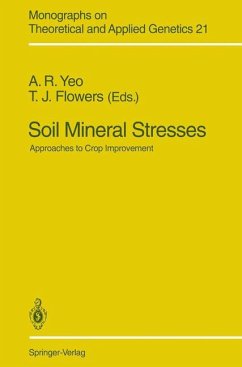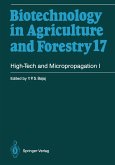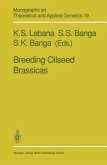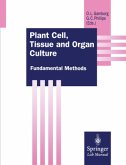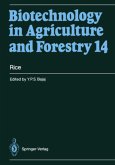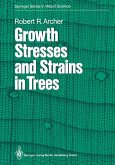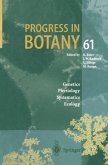Thisbookisconcernedwiththewaysinwhichcropsmightbedevelopedfor soilsthatare,atthepresent,agriculturallyunproductivebecauseofexcesses and/ordeficienciesofcertainminerals. Wehaveconcentratedonsoils,rather thanonenvironmentalconditionsthatlimitproductivity,sincetherehavebeen anumberofrecenttextsdealingwithtopicssuchasdroughtandtemperature. Theaimisthatthoseworkingtoderivecropsforgrowthonthese"problem" soilsshouldbeawareofthemanydiverseavenuesthatareavailable. These comefromthedisciplinesofplantbreeding,geneticsandphysiology,andthe interfacesthataredevelopingbetweenthem. Thebackground,therequirementstofeedtheprojectedincreaseinhuman population,issetoutintheintroductorychapter. Thenextfivechaptersthen dealwiththeapproachestocropimprovement:themeritsofaconventional breedingprogramme,theimportanceofphysiologicalcharactersinmaking selections,theuseofinvitrotechniques,ofcytogenetics,andthevalueof developingnativeplantsintocropsintheirownright. Althoughsalinityisoften usedasanexample,reflectingtheresearchinterestsofmanyoftheauthors,the methodsandapproachesdescribedhavemuchwiderapplicability. Twochap tersarethenconcernedmorespecificallywithbreedingfortolerancetoother metaltoxicitiesandwithdeficienciesandtoxicitiesofmicronutrients. Finally,in theconcludingchapter,wesummariseandfindcommongroundbetweenthe differentapproachesandpointsofview. Brighton,April1994 ANTHONYR. YEO TIMOTHY J. FLOWERS Contents Chapter1 Introduction:WorldPopulationandAgriculturalProductivity T. 1. Flowers 1. 1 HowManyPeopleAreThere? . 1 1. 2 AgriculturalRequirements. . 2 1. 2. 1 FoodRequirements. . . . . . . . . . . 2 1. 2. 2 FoodSupply. . . . . . . . . . . . . . . 4 1. 3 Population-CarryingCapacity. . . . . . . . . . . . . . . 5 1. 4 HowMuchLandIsThere? . 6 1. 5 IncreasingFoodProduction . 7 References. . . . . . . . . . . . . . . . . . . . . . . . . . . . . 9 Chapter2 ConventionalPlantBreedingforTolerancetoProblemSoils C. N. ChaubeyandD. Senadhira 2. 1 ScreeningTechniques . 11 2. 2 VariabilityinToleranceforSoilStresses . 14 Rice . 15 2. 2. 1 2. 3 GeneticsofToleranceforSoilStresses. . . . . . . . . . . . 16 19 2. 3. 1 GeneLocationandLinkages. . . . . . . . . . . . . . . . . . CorrelatedChanges. . . . . . . . . . . . . . . . . . . . . . . 20 2. 3. 2 2. 4 Crop-Improvement . 21 2. 4. 1 Introduction. . . . . . . . . . . . . . . . . . . . . . . . . . 21 2. 4. 2 PureLineandMassSelection. . . . . . . . . . . 21 2. 4. 3 HybridisationandSelection. 23 2. 4. 3. 1 PedigreeMethod. . . . . . . 23 2. 4. 3. 2 BulkMethod. . . . . . . . . 23 BackcrossBreeding. . . . . . 2. 4. 3. 3 26 2. 4. 3. 4 RecurrentSelection. . . . . . . . . . . . . . . . . . . . . . . . 26 2. 4. 3. 5 RapidGenerationAdvanceProcedures. . . . . . . . . . . . 27 2. 4. 4 MutationBreeding. . . 28 2. 4. 5 PolyploidBreeding. 28 2. 4. 6 HeterosisBreeding. 29 2. 5 Summary. . . . 29 References. . . . . . 29 VIII Contents Chapter3 PhysiologicalCriteriainScreeningandBreeding A. R. Yeo 3. 1 Introduction. . . . . . . . . . . . . . .. . . . . . . . . . . . . 37 3. 2 ReasonsfortheUseofPhysiologicalSelection . 38 3. 2. 1 TheComplexityofTolerance. . . . . . . . . . 38 3. 2. 2 ImportingTolerancefromWildRelatives . 39 3. 2. 3 MeasuringStressTolerance . 40 3. 2. 4 InteractionBetweenEnvironmentalStresses. . . . . . . . . 42 3. 2. 5 LimitationstotheUseofYieldasaSelectionCriterion. . . 42 3. 3 Salinity . 43 3. 3. 1 BasicProblems. . . . . . . . . . . . . . . . . . . . 43 SaltExclusion. . . . . . . . . . . . . . . . . . . . . . 44 3. 3. 2 3. 3. 3 ConditionsRequiringOsmoticAdjustment. . 45 3. 3. 4 CharacteristicsNeededinSalt-TolerantPlants . 46 3. 3. 4. 1 ControlofSaltUptake. . . . . . . . . . . . . . . . . . .
Bitte wählen Sie Ihr Anliegen aus.
Rechnungen
Retourenschein anfordern
Bestellstatus
Storno

